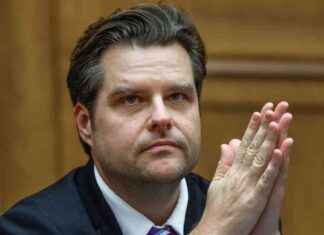Federal Reserve Chair Jerome Powell has introduced a new term to describe the central bank’s monetary policy, calling it a “recalibration” at a critical juncture. During a news conference following the open market committee meeting on Wednesday, Powell emphasized the importance of this recalibration in light of the Fed’s decision to implement a half percentage point rate cut without clear signs of economic weakness.
Powell reiterated the necessity of this policy adjustment to support the economy and labor market while also addressing inflation concerns. He stated, “This recalibration of our policy stance will help maintain the strength of the economy and the labor market, and will continue to enable further progress on inflation as we begin the process of moving forward a more neutral stance.”
The financial markets initially reacted cautiously to Powell’s messaging, unsure of the implications of the unexpected rate cut. However, investor confidence surged on Thursday as Powell’s reassurances about the Fed’s intentions to recalibrate policy away from a singular focus on inflation to a more comprehensive approach that considers the labor market resonated with market participants.
Market Response and Economic Analysis
Following Powell’s announcement, the Dow Jones Industrial Average and S&P 500 both reached new highs in trading, reflecting the positive market sentiment towards the Fed’s recalibration of policy. Analysts like Tom Porcelli, chief U.S. economist at PGIM Fixed Income, noted that the adjustment was necessary given the evolving economic landscape.
Porcelli explained, “Policy had been calibrated for meaningfully higher inflation. With the inflation rate now drifting close to target, the Fed can remove some of that aggressive tightening that they put into place.” This shift in policy direction signals the Fed’s commitment to extending the economic expansion rather than responding to a recessionary environment.
Despite Powell’s track record of using buzzwords that have elicited mixed reactions from the markets in the past, such as “autopilot” and “transitory,” market participants expressed confidence in the Fed’s latest move. Michael Feroli, chief U.S. economist at JPMorgan Chase, highlighted the optimism surrounding Powell’s announcement, noting that the rate cut was a proactive measure to maintain a strong labor market amid changing economic conditions.
Looking ahead, analysts like Seth Carpenter, chief global economist at Morgan Stanley, emphasized the importance of the Fed’s flexibility in responding to incoming data and evolving risks. This adaptability allows the central bank to adjust its policy stance gradually or make more significant moves as needed to support the economy and employment.
Future Policy Outlook and Market Expectations
As the Fed looks towards upcoming meetings, market participants and economists are debating the potential trajectory of monetary policy. While some anticipate a quarter-point cut in November followed by a half-point move in December, others argue for a more aggressive approach to address ongoing labor market challenges.
Aditya Bhave, an economist at Bank of America, highlighted the Fed’s commitment to achieving “maximum employment” as a signal of its readiness to take bold actions if needed. This stance suggests that the recalibration of policy could involve front-loading rate cuts to support the labor market and economic growth.
However, the path forward remains uncertain, with differing opinions on the Fed’s future actions. Some analysts predict a gradual return to quarter-point increments through the remainder of the year, while others advocate for more substantial rate cuts in response to continued labor market weaknesses.
In conclusion, the Fed’s recalibration of policy under Powell reflects a strategic shift towards supporting economic growth and employment while addressing inflation concerns. The central bank’s willingness to adjust its stance based on evolving economic conditions demonstrates a commitment to maintaining a strong and resilient economy in the face of uncertainty. As markets continue to react to the Fed’s latest move, investors and analysts alike are closely monitoring the central bank’s actions and statements for further insights into the future of monetary policy.








